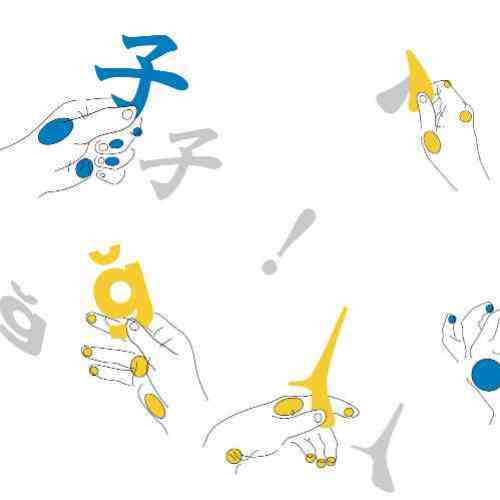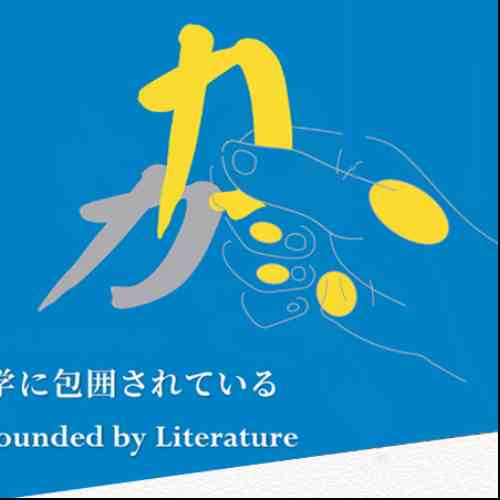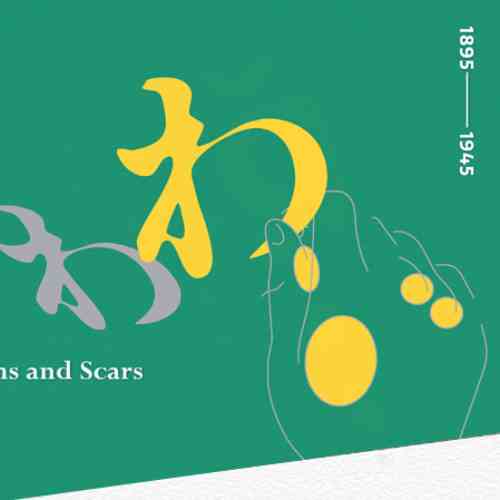.jpg)
ʕ •ิ o •ิ ʔ Legends, the Lifeblood of Civilization: Oral Literature
Austronesians were Taiwan's first settlers. They created Taiwan's earliest societies and its earliest literature.
Lacking a written language, traditional Austronesian literature was remembered and shared orally. Rhythm and rhyme further helped embed cherished stories and wisdom in tribal memory, ensuring culture and traditional knowledge were preserved. Stories told how the world came to be, explained the movement of stars, honored ancient heroes, and conveyed important knowledge and taboos. Mythology and legend encapsulated the lived experience of Austronesians in Taiwan.
.jpg)
ORAL LITERATURE Audio Installation
Six indigenous myth stories are included here (From left to right: Thau people's White Deer legend, Atayal people's Story of Augury, Tao people's Invitation from Flying Fish God, Bunun people's Black Bear's Wisdom, Rukai people's Clouded Leopard's Head Lice Family, Bunnun people's Angry Deinagkistrodon). The installation invites you to listen to legends rooted in the daily lives of the indigenous peoples in their traditional, indigenous languages.
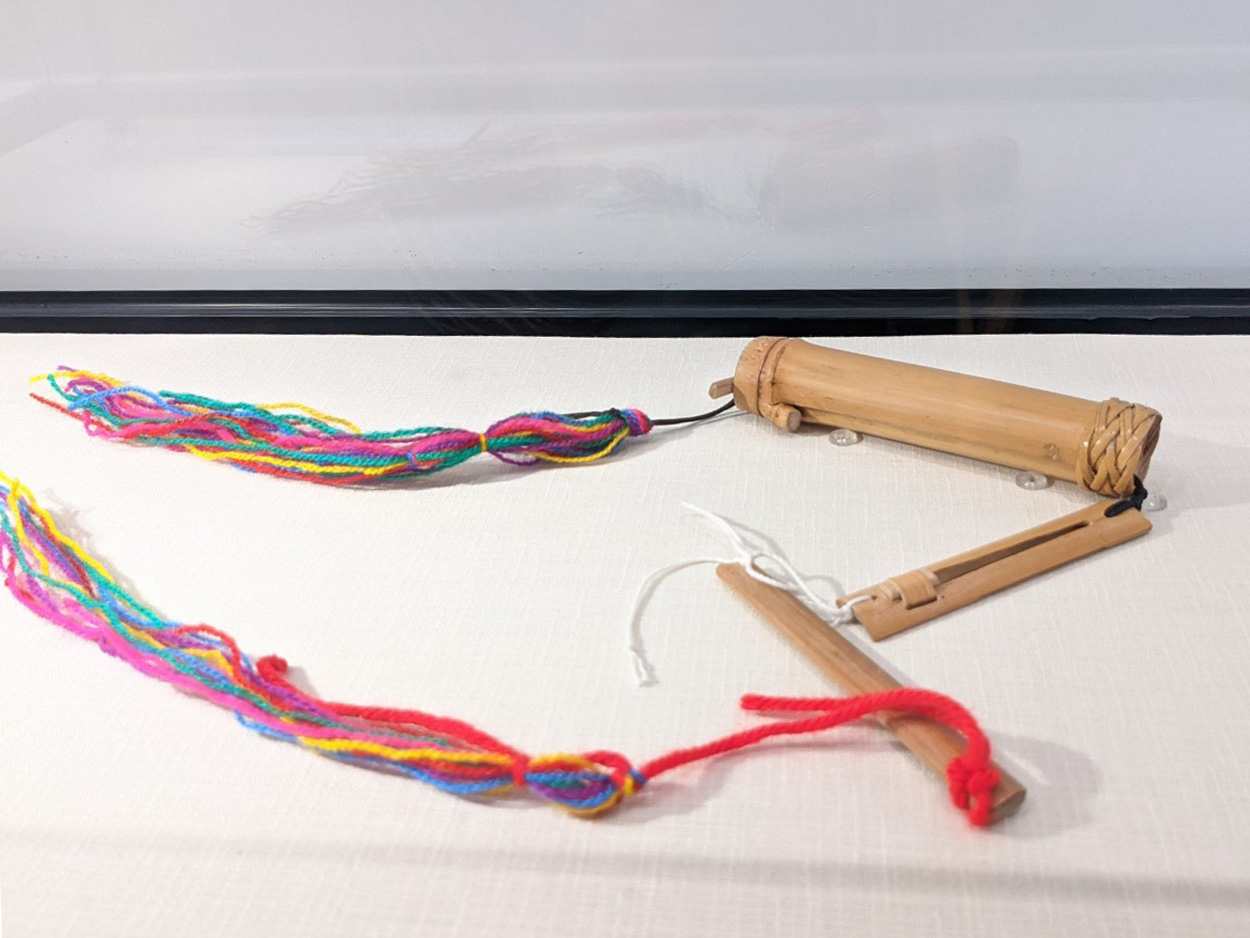
▸ Jew's Harp|Jew's Harp is an instrument common to many of Taiwan's indigenous tribes. It can be played by anybody regardless of gender or age. It has unique meanings and values in conveying messages, entertaining, courting, celebrating festivals/weddings, and dancing.
≖‿ゝ≖✧ The Human Experience Told in Metered Rhyme: Classical Literature
The first 'seeds' of classical Chinese literature arrived in Taiwan with Shen Guang-wen (1612 - 1688) in 1662. He and fellow scholar Chen Yong-hua (1634 - 1680) opened the island's first schools of traditional Chinese learning.
Taiwanese literature during the period of Qing rule (1683 - 1895) was written primarily by Chinese officials posted to the island. Most viewed Taiwan as curiously exotic, and delighted in contrasting it with China's more-civilized heartland. Themes of the sea, weather, and natural resources featured prominently. Contemporary author Gao Gong-qian even managed to establish a new and iconic literary genre with his literary collection "Poems of Taiwan's Eight Wonders". Nativist literature began to take shape midway through Qing rule. Three Taiwanese-born Qing officials, including Zheng Yong-xi (1788 - 1858), Yang Shi-fang (1826 - 1903), and Cai Ting-lan (1801 - 1859), are widely regarded as the 'fathers' of Taiwanese nativist literature.
China's ceding of Taiwan to Japan in 1895 led many authors active during the first decades of Japanese rule to write in shades of indignant grief. While some of Taiwan's educated elite resettled in China, many more stayed, experiencing life under a new and foreign regime. Their creative output enriched the early colonial-period literary community and fueled a broad-ranging literary awakening.
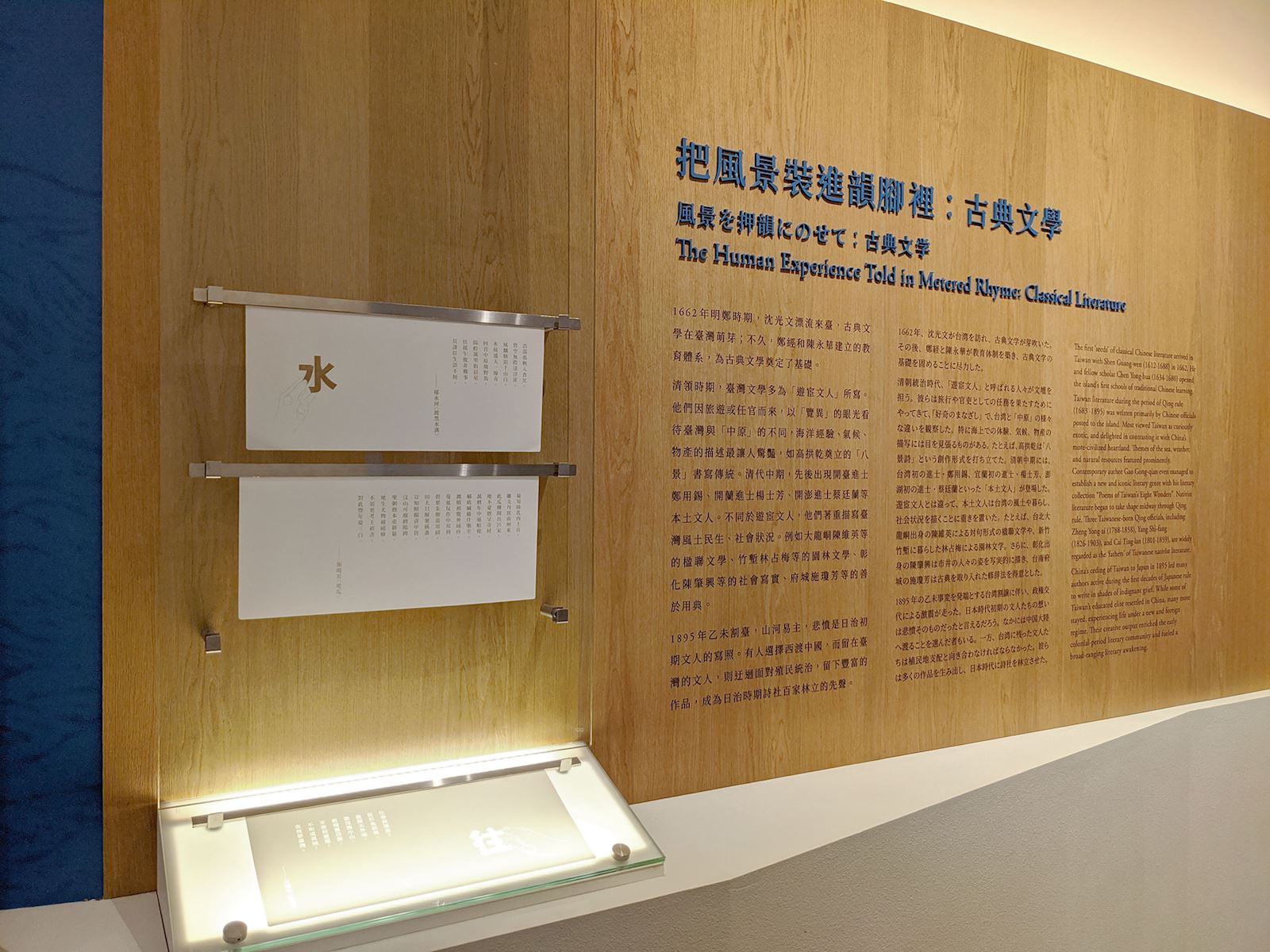
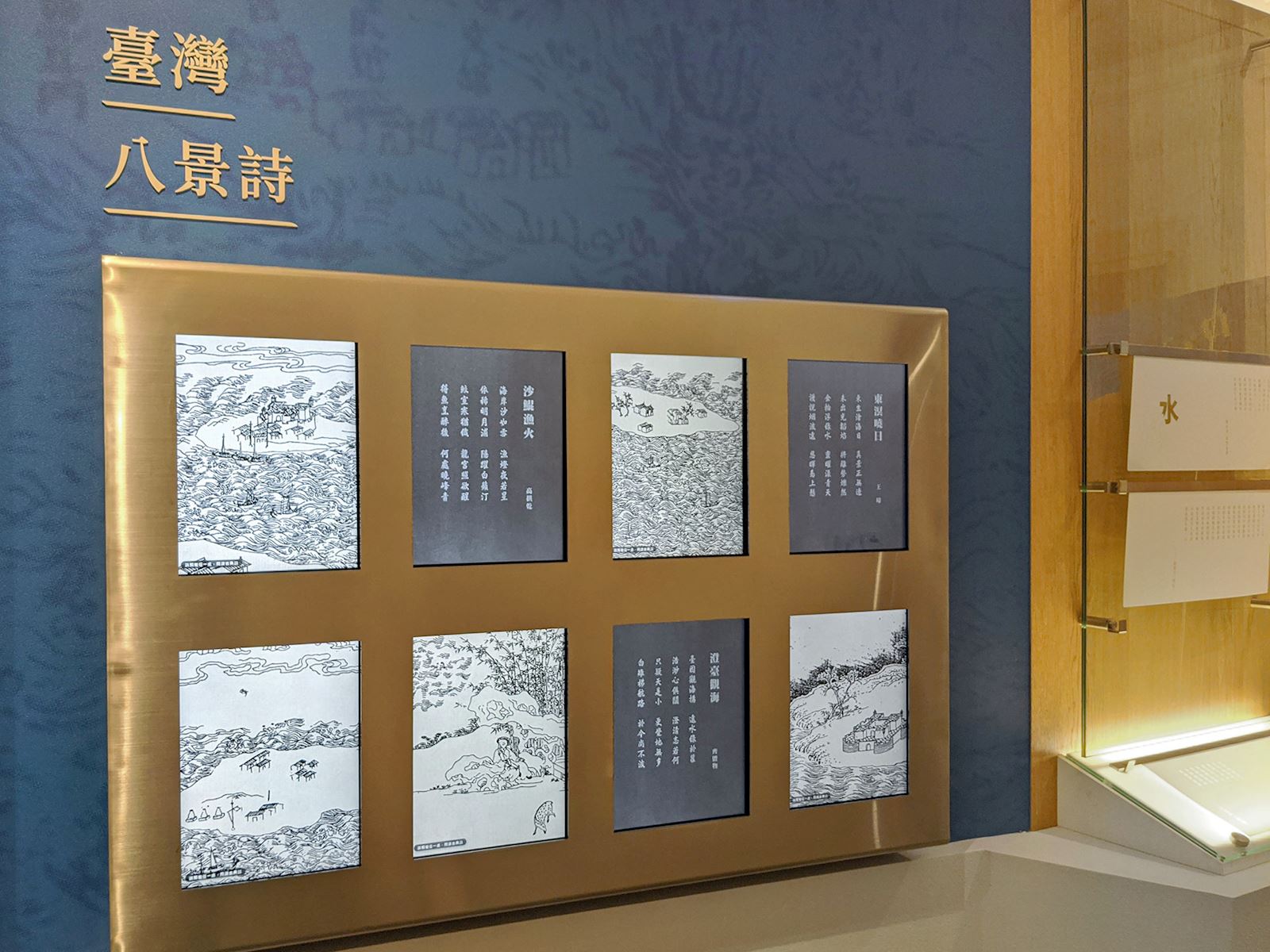
POEM ON TAIWAN'S EIGHT NATURAL SCENES Interactive Installation
By tapping the ink wash painting on the screen, you will see the eight natural scenes across Taiwan appear in eight classical poems from the Qing Dynasty.
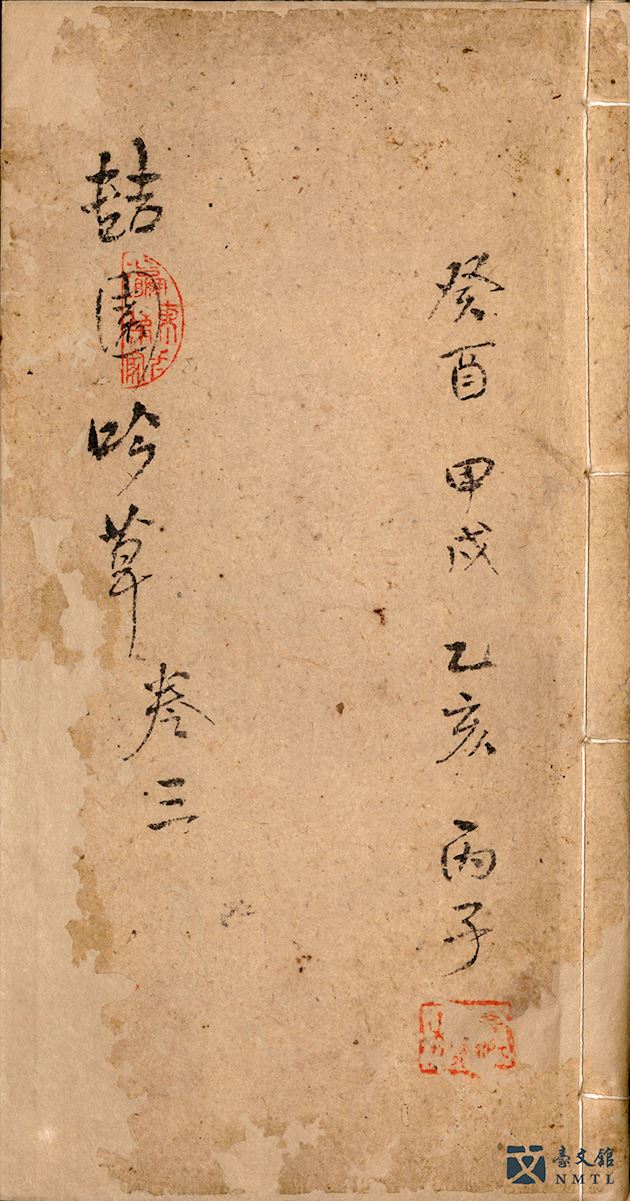
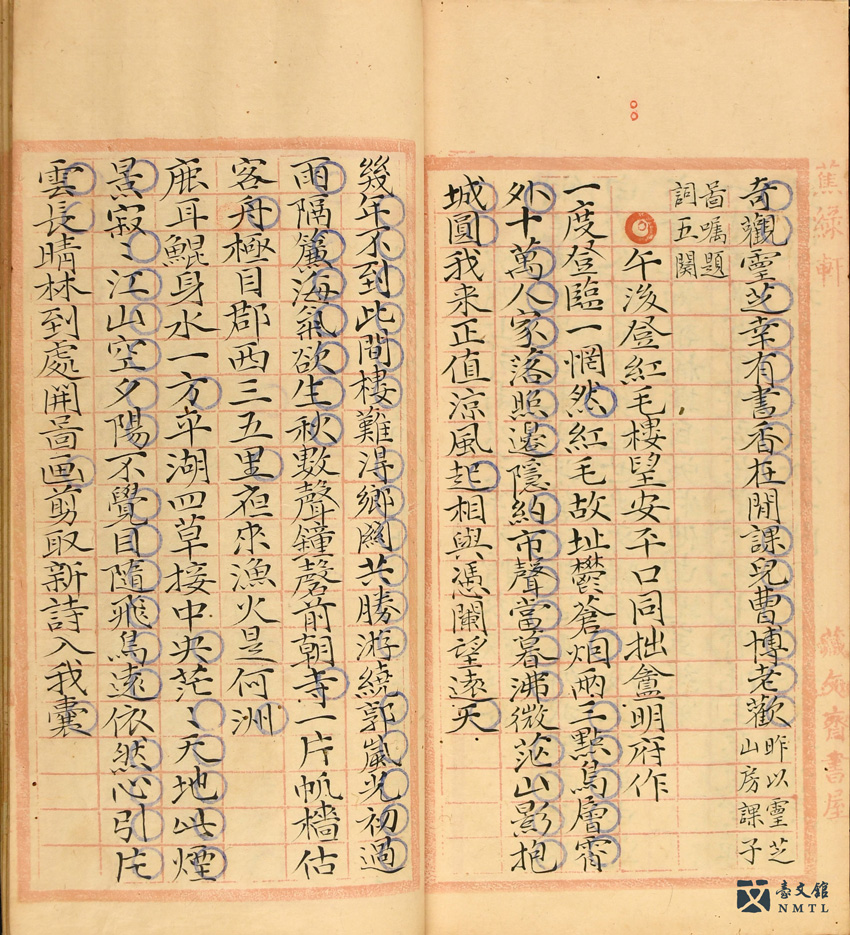
▸ Shi Shi-hao, ZHE YUAN POETRY: Cover of Vol.3 & inside page of Vol.4|Shi Shi-ji (1856-1922), aka Yun Fang or Zhe Yuan, was born in Taiwan County (now Tainan City) during the Qing dynasty. His poems can be found in Housukan Poetry Collection and Taiwanese Poetry No.12. The extremely rare four books of Zhe Yuan Poetry are not found in either of these collections.

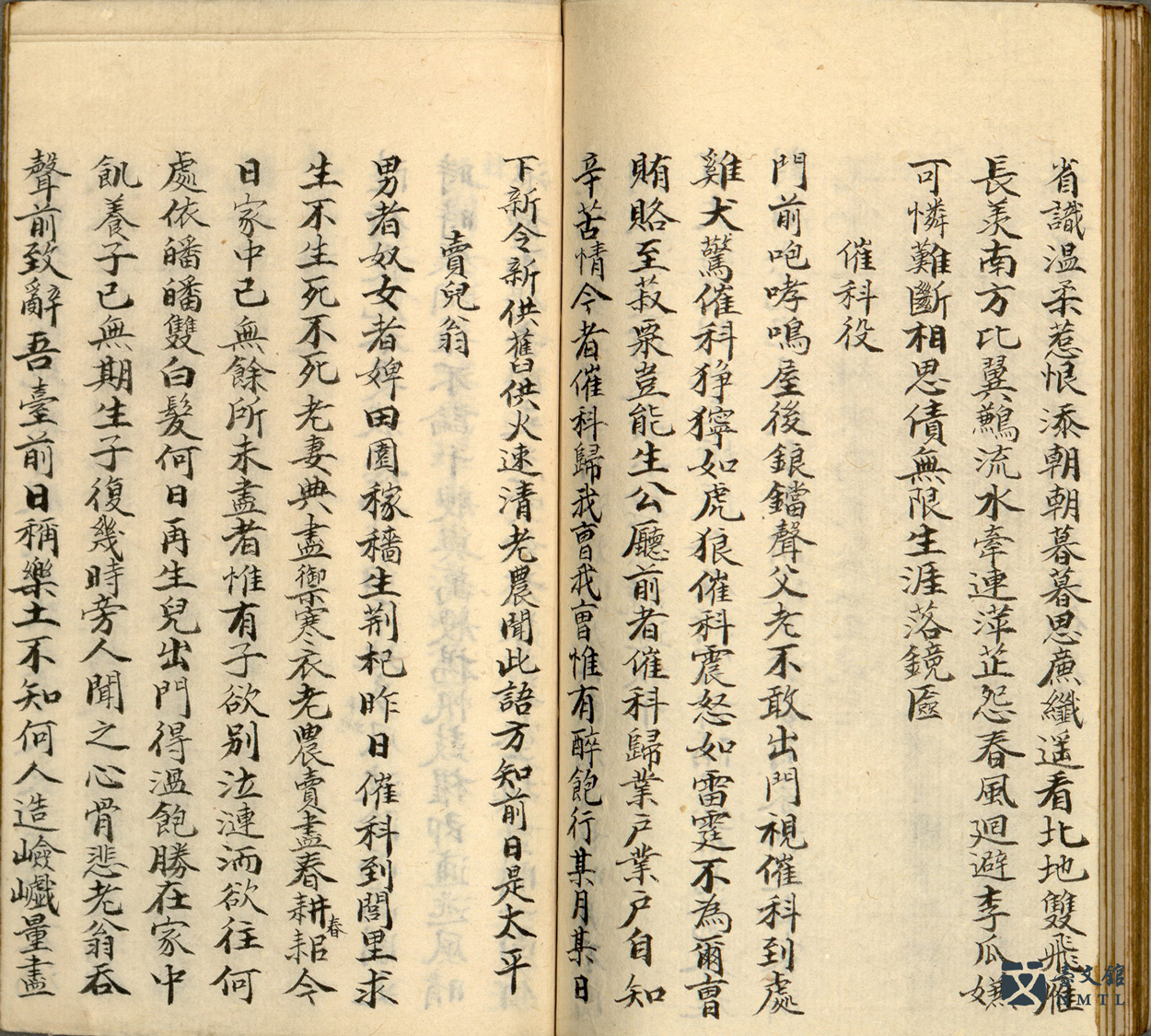
▸ Hong Qi-sheng, Table of contents (Vol.1) & insides pages of Vol.2, JIHEZHI POETRY COLLECTION: BEFORE YEAR YIWEI|One of the best-known poetry collections of Hong Qi-sheng. Written between 1886 and 1895, it features 3 poems, including Xi Zou Qu and Eight Impressions on Jinling. The poems are mostly Hong's writings on the imagination of Chinese poets from the perspective of an intellectual in the Qing dynasty. These poems also express his dissatisfaction with, and criticism of, politics in the late Qing period.
ʕ •͡ᴥ• ʔ Taiwanese Alphabetically Parsed: Pe̍h-ōe-jī
Western missionaries developed Pe̍h-ōe-jī during the late 19th century as a romanized, phonetic form of the local Chinese dialect (Hokkien). The TÂI-OÂN-HÚ-SIÂⁿ KÀU-HŌE-PÒ (TAIWAN CHURCH NEWS), founded in 1885 by Scottish missionary Thomas Barclay (1849 - 1935), was the first major Pe̍h-ōe-jī publication.
Pe̍h-ōe-jī took root during the Japanese Colonial Period (1895 - 1945) and, in 1924, the Taiwan Cultural Society began promoting Pe̍h-ōe-jī island-wide. Other influential Pe̍h-ōe-jī advocates included the Society for Pe̍h-ōe-jī Research, founded by author Chhòa Pôe-hóe (Tsai Pei-huo), and the Yixin Association of Wufeng, founded by the father-son team of Lin Xian-tang and Lin Pan-long.
Pe̍h-ōe-jī remains a living language. The long-running TAIWAN CHURCH NEWS was shut down in 1969 during a public campaign against non-Mandarin media. However, Pe̍h-ōe-jī continues to survive in general, albeit limited, circulation, and has an important place in post-Martial-Law-era nativist literature.
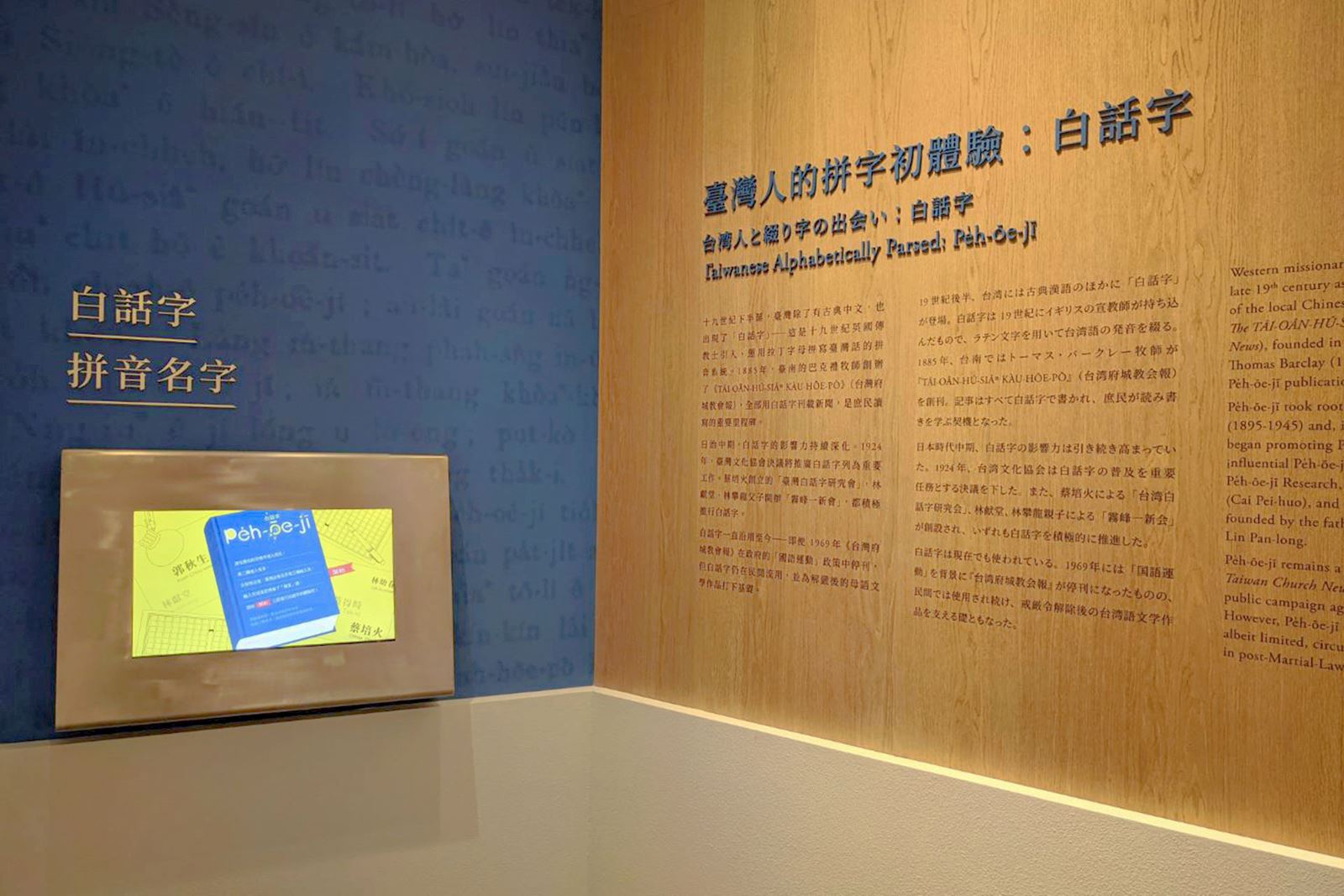

PE̍H-ŌE-JĪ NAME CONVERTER Interactive Installation
What does your name look like when it is written in Pe̍h-ōe-jī? Enter your Chinese name and get a virtual card printed with your name in Pe̍h-ōe-jī.
.jpg)
▸ Lai Ren-sheng, KHÓ-ÀI Ê SIÛ-JÎN (LOVELY ENEMY)|Medium-length novel written by Lai Ren-sheng (1898-1970). Published in 1960, the book examines relationships in the transition between the old and new eras. This typical, Christian novel provides explicit descriptions of Taiwan's landscape. With the hardworking common people as the backdrop, the novel carries multiple religious meanings that are soothing and encouraging.
(台灣府城教會報)-發刊詞.jpg)
▸ Thomas Barclay, TÂI-OÂN HÚ-SIÂⁿ KÀU-HŌE-PÒ (TAIWAN CITY CHURCH NEWS) Introduction of the first issue|Thomas Barclay's introduction in the first issue of Taiwan City Church News, founded by him in 1885. Barclay was a missionary of the Presbyterian Church of England. In the introduction, he mentions that learning Chinese characters is difficult. In order to convey the news from the Church and educate followers, the publication adopted localized modern characters based on the Xiamen dialect.
NMTL20080360199_002_tif-的副本.jpg)
▸ Lin Mo-sei, LŌ͘-TEK KÁI-KÀU Le̍k-sú Hì (HISTORICAL DRAMA: THE REFORMATION BY MARTIN LUTHER)|Screenplay written by Lin Mo-sei (1887-1947). The work is based on Martin Luther's protest against the Roman Catholic Church's corrupt practice of selling “indulgences” and the trials he encountered after proposing the 95 Theses. The story was serialized in Taiwan Church News (November 1924 - February 1925). Later on, it was published independently.
NMTL20080360091.jpg)
▸ Tsai Pei-huo, CHA̍P-HĀNG KOÁN-KIÀN (TEN CONCEPTS)|Tsai Pei-huo (1889-1983) actively promoted the most-needed Ten Types of Social Education in Taiwanese society through Romanized texts and cultural movements to inspire people. The book expatiates on ten separate concepts, including religion, life, Taiwan identity, women, and civilization. The book is a portrayal of Tsai's fervent ambitions.
NEXT: “Indefatigable Resolve”
